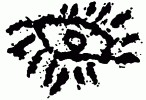| |
TOPOGRAPHY AND EXEGESIS
Reading through the biblical account of the Exodus one finds numerous indications concerning the compilers' conception of Mount Sinai's topography. Having done archaeological work in the Negev and Sinai for over forty years and being thus familiar with the landscape and geography of this area, it seems to us that the characteristics of many biblical descriptions concerning the sites mentioned and their topography are real and may be recognisable. In our view, those who described them were well acquainted with regional geographical details, or at least had access to reliable information. We wish to emphasise that we do not share the idea of those who claim that the identification of the biblical stations is impossible, or even that they have no connection with real territory. To our mind the itinerary of the Exodus as described in the books of Exodus and Numbers, from the land of Goshen to Mount Sinai, to the fields of Moab and Jericho, referred to real sites that were well known by travellers at the time of the compilation, therefore the route may be reconstructed in our own time.
With the progress of exploration and research, a rough sketch of this itinerary has been filled in and enhanced by archaeological finds and by parallels with the topography and the landscape. Recently we were able to propose an identification of the two biblical stations Marah and Elim respectively with El Murra and with the surroundings of Abu Awgeila in the northern Sinai. Also Beer Karkom, seven kilometres to the north of Har Karkom, may well be the real biblical site of Rephidim, the last station before reaching Mount Sinai. The biblical descriptions are realistic and in our view the topography corresponds. If, as we trust, sufficient evidence exists for the identification of these three sites, the area in which Mount Sinai may be located is thus circumscribed. This aspect of the real topography of Exodus is treated in detail in the volume Esodo tra Mito e Storia (1997).
|



